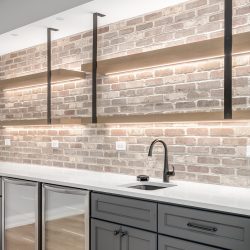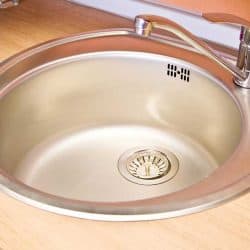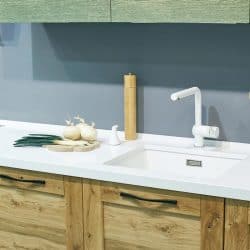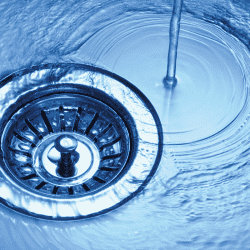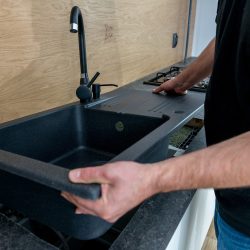Designing and renovating a kitchen can be full of all kinds of decisions. Choosing a kitchen sink may seem like a pretty straightforward task, but with so many types of sinks available in today's market, it can be a difficult decision. Each sink has a unique style from its design aesthetic, function, and material from which it's made.
You should consider several factors when choosing what kind of sink you would like to install in your kitchen. Think about what function the sink will serve the most. You'll also want to consider the size and style of sink you want to match the rest of your kitchen. Here are 10 types of kitchen sinks to consider:
- Farmhouse or Apron Sink
- Top-Mount or Drop-In Sink
- Undermount Sink
- Single Basin Sink
- Double Basin Sink
- Drainboard Sink
- Corner Sink
- Bar or Prep Sink
- Low Divider Double Basin Sink
- Integrated Sink
We will now go into more detail about each of these styles of popular sinks. After learning the pros and cons of each type, we hope you can make an educated choice on the type of sink that will work best in your kitchen.
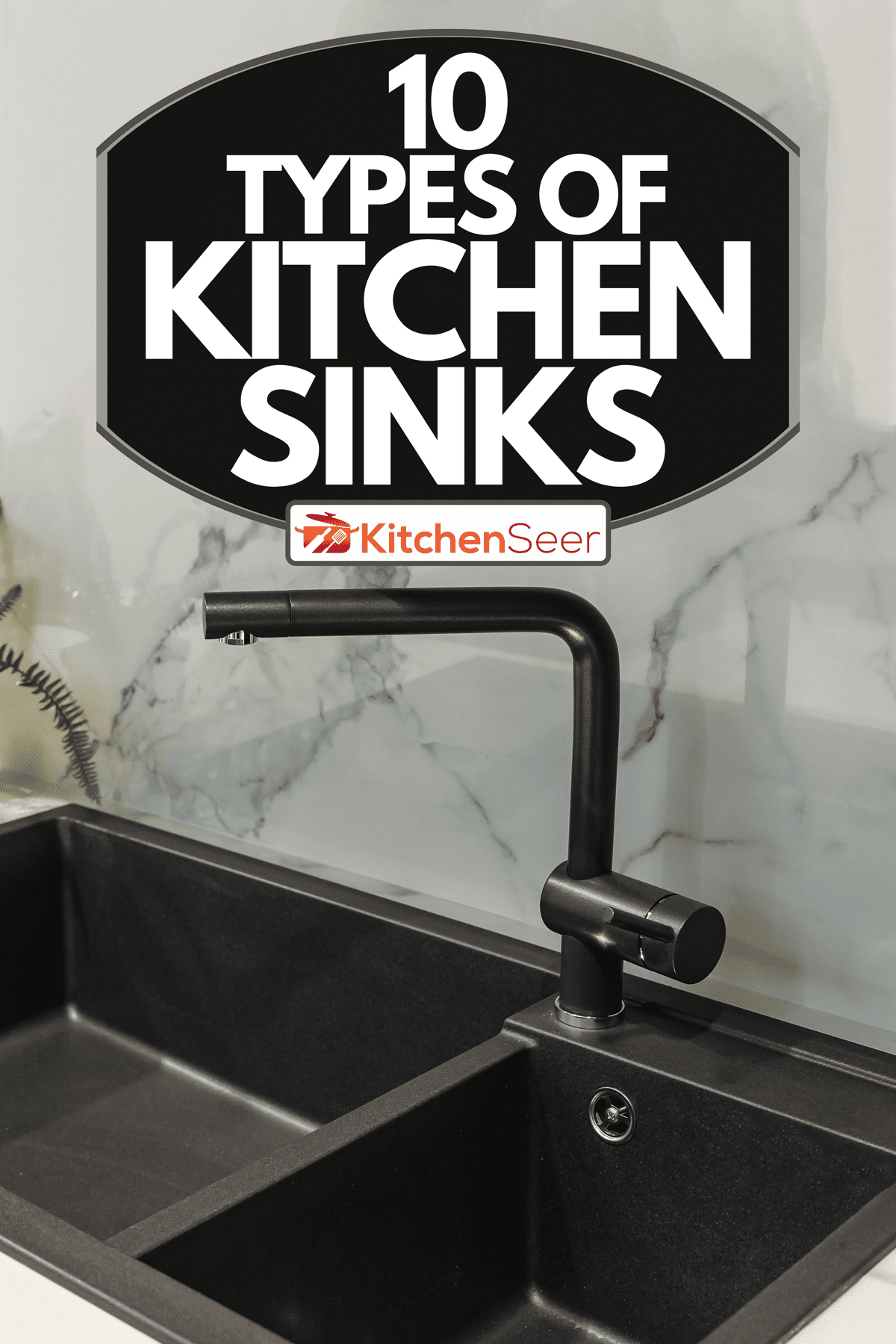
10 Types Of Kitchen Sinks
1. Farmhouse or Apron Sink
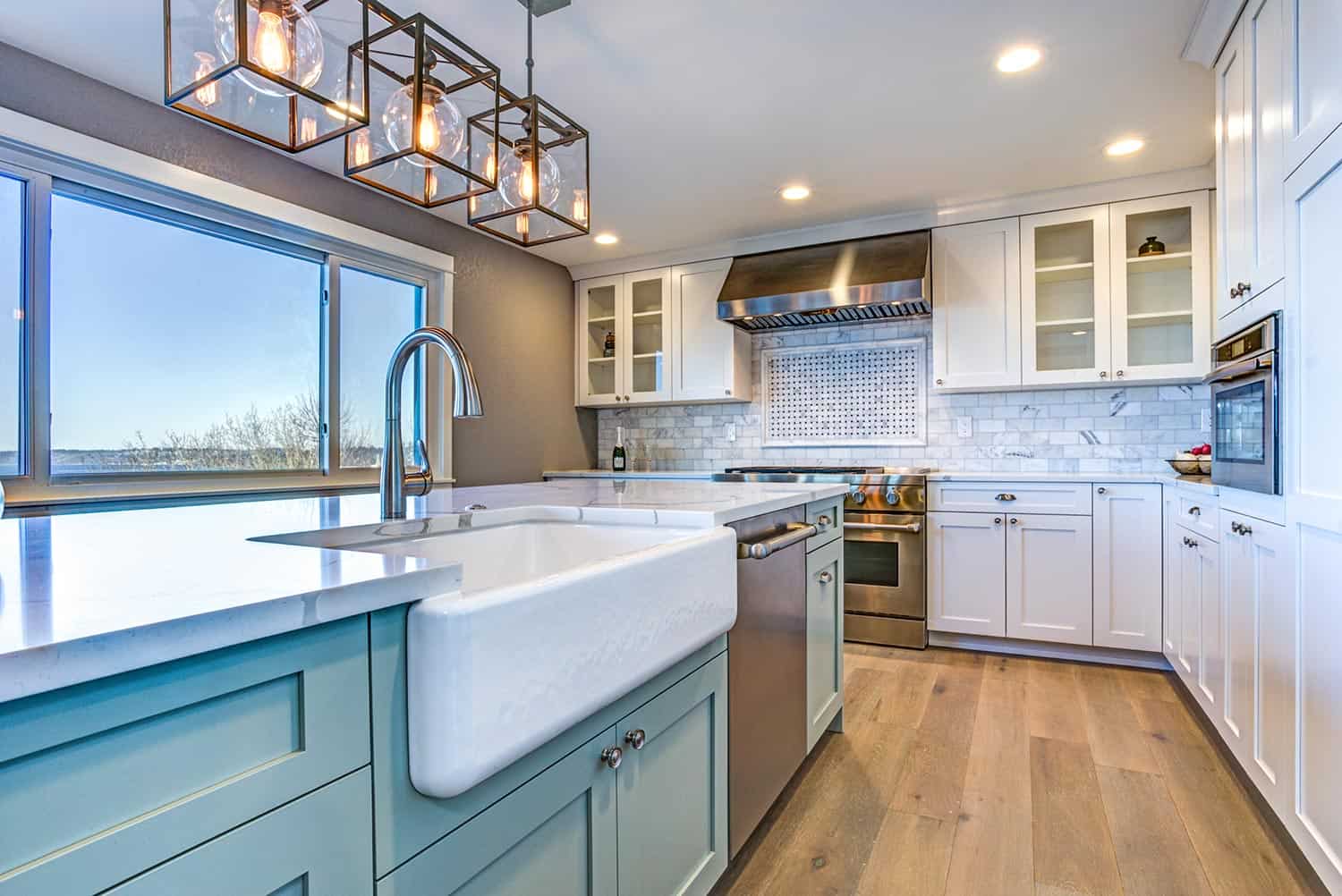
Farmhouse or apron front sinks are unique because of their front wall. This wall forms both the front of the sink and the edge of the counter, replacing a section of the counter. This type of sink is often used in traditional or country-style designs. However, many modern homes are also incorporating these sinks into their design.
Pros: These sinks are generously sized and make washing large pots and pans easy. There is little room between the edge of the counter and the sink, so less strain is likely for the person using the sink.
Cons: Farmhouse sinks can be rather expensive, and installation can also be more difficult. These sinks are more prone to dripping because of the narrow barrier between the floor and the sink.
2. Top-Mount or Drop-In Sink
This is probably the most common type of kitchen sink available on the market today. It is sometimes referred to as a drop-in sink because of the way it is installed. A hole is cut into your counter to accommodate the sink, and it is dropped in from above. The rim of the sink carries the whole weight of the sink. This rim or lip of the sink creates a finished look.
Pros: Top-mount sinks are very easy to install, with no special skills needed. This type of sink is usually fairly inexpensive and good for those on a budget. The rim of the sink offers extra support, so almost any material can be used in top-mount sinks, no matter how heavy.
Cons: Grime and debris can become caught in the area between the lip of the sink and the counter, making clean-up more difficult. Also, sweeping crumbs or water straight from the counter into the sink can be difficult because of the sink's rim.
Click here to find a drop-in sink like the one above at Amazon.
3. Undermount Sink
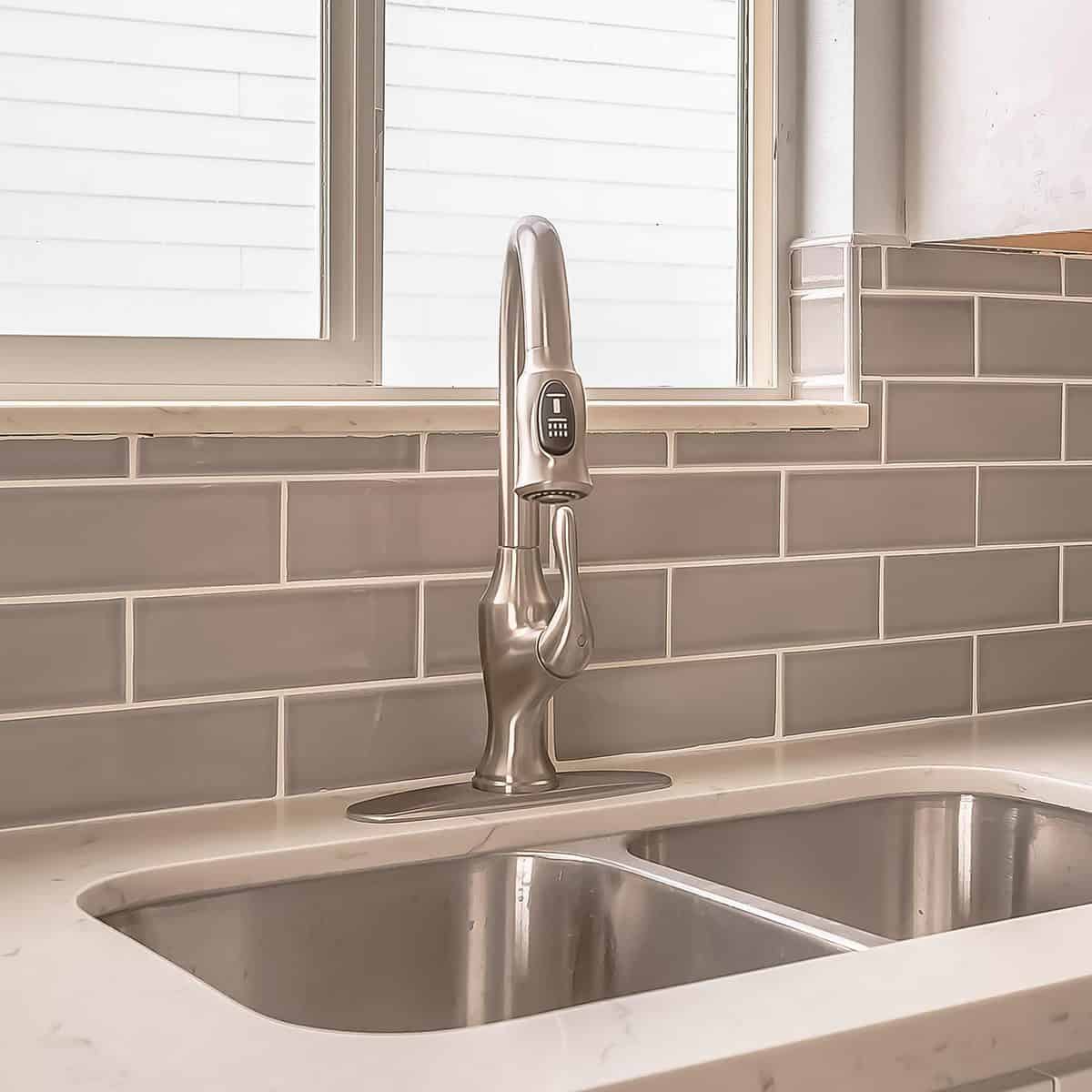
If you are looking for a sleek, clean option, an undermount sink may be what you're looking for. You install this type of sink directly under your counter. No lip or rim is present, creating a seamless look from the counter to the sink.
This sleek design is versatile and works with most kitchen layouts. Consider the weight of the sink as it is usually installed using glue on the underside of the counter. Heavier materials will not work with this type of sink.
Pros: Sweeping water or debris into your sink from your counter is a breeze with undermount sinks. No lip or rim will get in the way and collect any grime. These sinks also provide a clean, modern look to any kitchen design.
Cons: Undermount sinks are usually more expensive and much more difficult to install than top-mount sinks. Build-up can collect under the counter where the sink and counter meet. Additionally, you may be limited in the size of your sink when choosing an undermounted sink.
4. Single Basin Sink
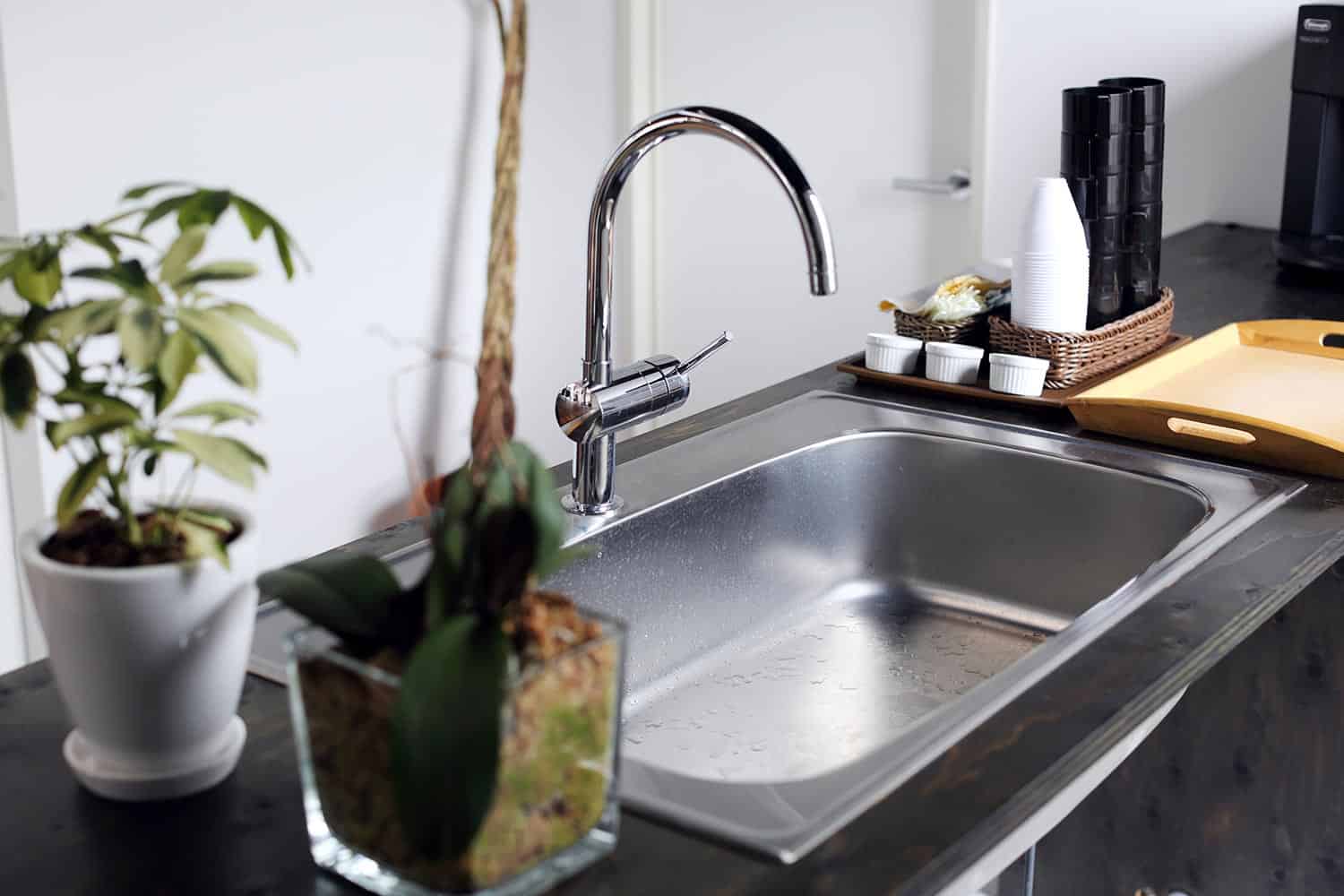
As one would assume, this type of sink only has one bowl or basin. These sinks are great for smaller kitchens or when counter space is limited.
Pros: Single basin sinks can accommodate large dishes or utensils that won't fit in double basin sinks, making washing dishes easier. Cleaning a single basin sink is easier than a double basin sink because there are fewer corners and edges to deal with. Single bowl sinks are also usually cheaper than double-basin sinks.
Cons: Multi-tasking in a single basin sink is more difficult. You will probably need to have a separate drying area set up next to your sink, as single basin sinks don't accommodate this.
5. Double Basin Sink
Just as the name suggests, this sink comes equipped with two basins. These sinks are ideal because of the versatility and flexibility they offer. All operations of a sink are covered with double basin sinks. Soaking, washing, rinsing, and drying can all be done in a double basin sink. Double basin sinks are the most traditional style of sink.
Double basin sinks can come in a variety of configurations. You can choose two basins that are the same size and depth, equal size basins with different depths, or basins that are different sizes altogether. Depending on what fits your needs, the choice is yours.
Pros: These sinks are multi-purpose and are great in houses without dishwashers. They are highly flexible and great for small spaces.
Cons: Having two smaller basins can make it difficult for large pots or pans to fit in the sink. Modern and contemporary designs tend to favor single basin sinks.
Find a double basin sink like the one above on Amazon.
6. Drainboard Sink
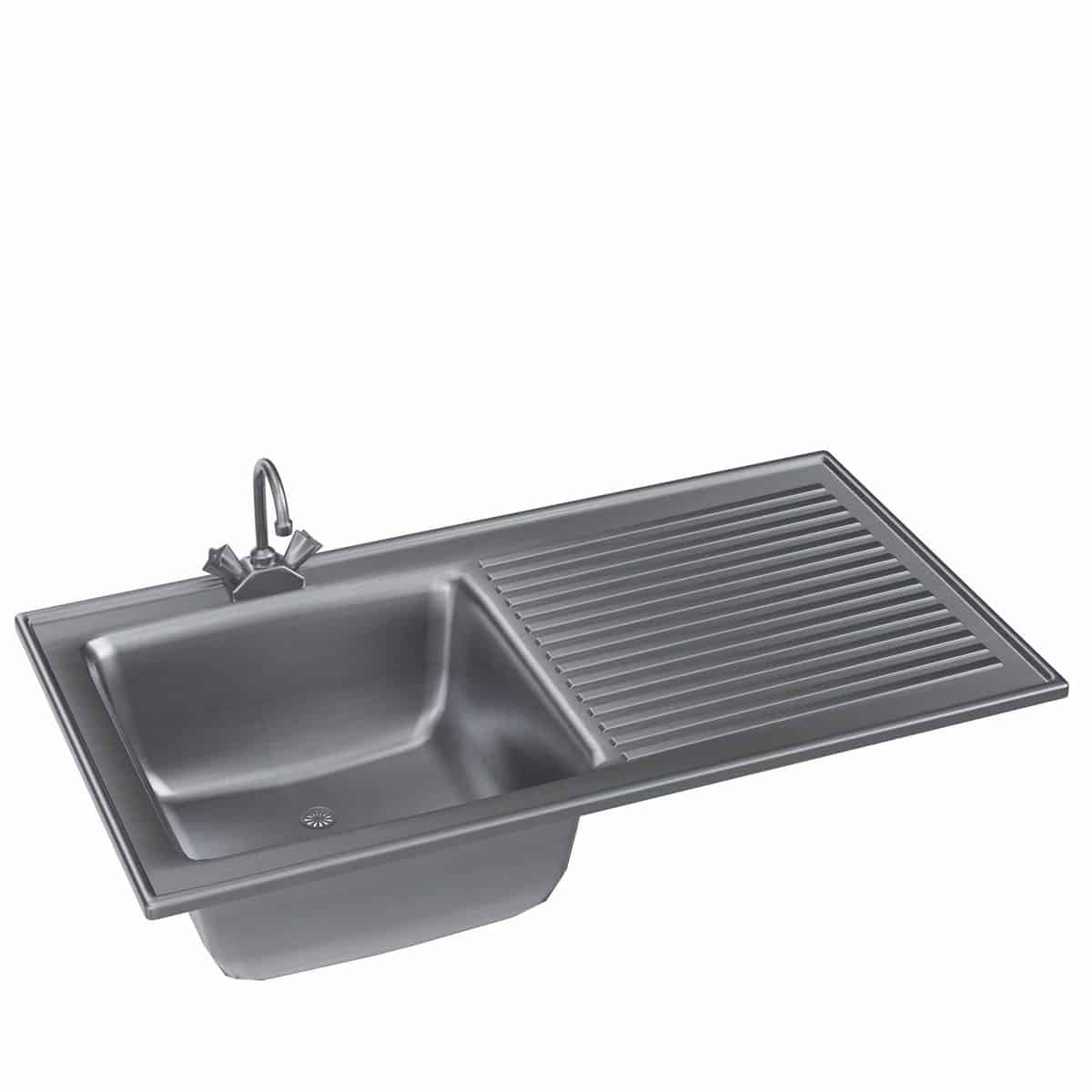
A drainboard sink is a sink with a counter-level basin on one side and a drainboard on the other side. This eco-friendly option can save you energy by easily washing your dishes in your sink. If you have limited counter space, you can also use the drainboard side for food prep.
Pros: Drainboard sinks are practical for small kitchens or kitchens with limited space. Dishes can easily dry on the drainboard without making a wet mess. Because the drainboard has a rim around it, water will drain directly back into the sink.
Cons: If you don't wash dishes by hand very often, this may not be the sink for you. Basins in drainboard sinks tend to be smaller, so if you are cooking for larger groups, you might want to look for other options.
7. Corner Sink
Corner sinks are double basin sinks that you install in the corner of your counter. The sinks are set at right angles to each other. These unique sinks can be useful if you are trying to maximize the counter space in your kitchen. Some corner sinks can even incorporate a drying section in the middle section between the sinks.
Pros: Corner sinks can make the best use of your counter space, and your corner counter space will not be wasted.
Cons: This type of sink is not very common and can be hard to find, and they're often difficult to install. They tend to be more expensive as well. These sinks require customs cuts in your counters. Because counters are often seamed in the corners, the structural strength of your counters may be reduced in the corners if the seams are bridged.
Look on Amazon to find a corner kitchen sink like the one above.
8. Bar or Prep Sink
A bar or prep sink is considerable smaller and will most likely not be the primary sink in your kitchen. You can install it on your kitchen island or in a wet bar. You can use these sinks for additional food prep or drink preparation. These sinks are single basins and are typically about 15 inches in diameter.
Pros: A second sink is always helpful if you have the available space. These sinks are a great option if you entertain often or need an additional sink for food or drink prep. The resale value of your house can also be increased because of additional sinks.
Cons: Depending on your kitchen's layout, the installation of an additional sink may take up valuable counter space. You may find you don't use your secondary sink as often as you intended. A prep sink might be an unnecessary luxury if you're on a budget.
Click here to see this prep sink available on Amazon.
9. Low Divider Double Basin Sink
Similar to the double basin sink, this sink has two bowls. However, the divider between the basins stops halfway up the sink instead of being level with the top of the sink.
Pros: This sink is like having a double and single basin sink in one. Filling one side low with water will allow you to have a double basin sink. But, if you need more room for bigger pots and pans, simply fill up the sink so the water will flow over the divider.
Cons: Only a few manufacturers produce this type of sink, so they are difficult to find. They also tend to be more expensive than regular single or double basin sinks.
Find this stainless steel low divider double basin sink on Amazon.
10. Integrated Sink
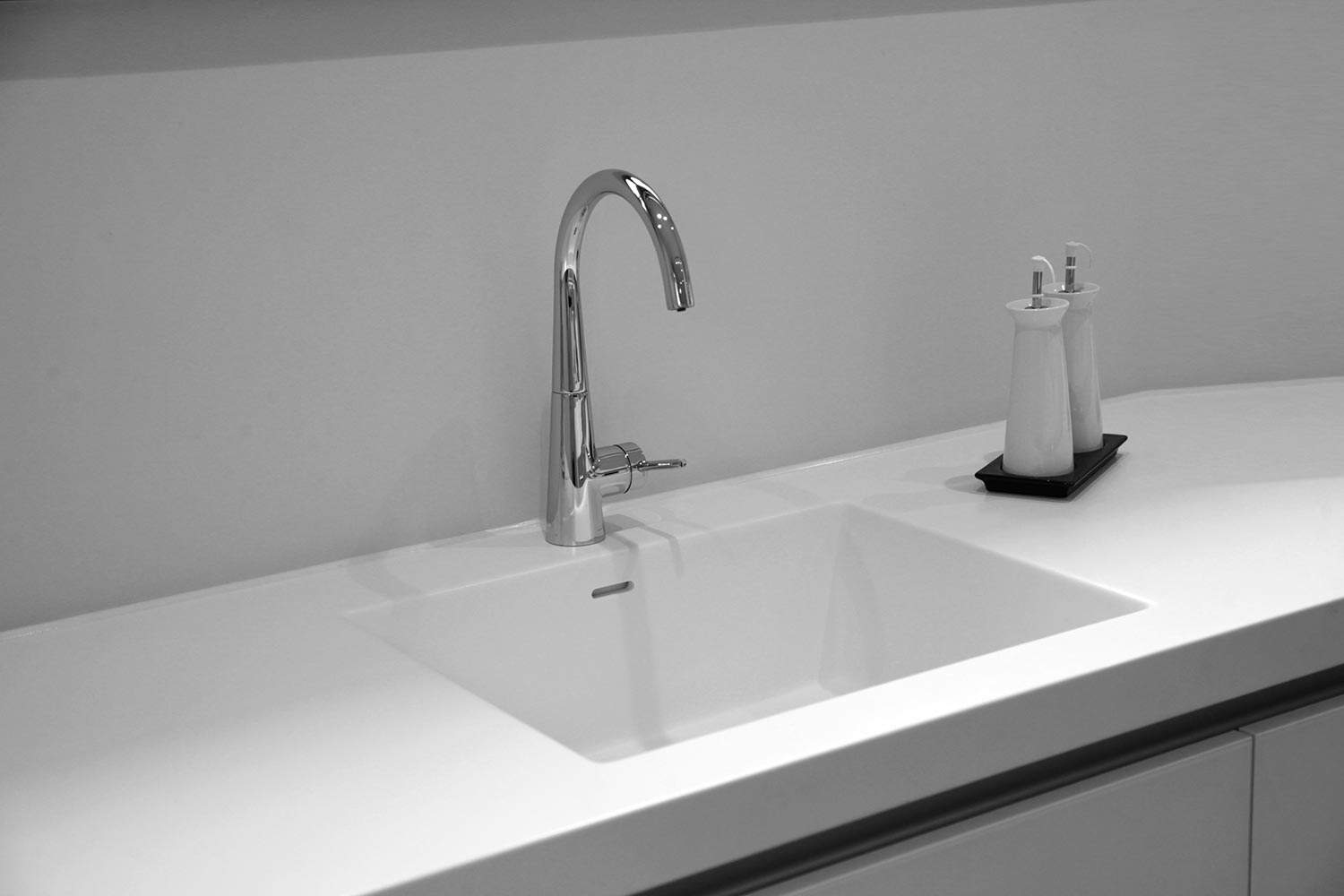
Integrated sinks are made out of the same material as the kitchen counters. The countertop seamlessly merges right into the sink. Countertop manufacturers are actually the ones that make the sink. The sink blends right into the countertop, creating a modern, sleek look.
Pros: There are no seams above or below the counter. This prevents dirt, grime, or debris from being trapped in those tiny crevices and makes clean-up a breeze.
Cons: You have to custom order integrated sinks, and they can be costly. If the sink becomes damaged, it can be difficult to fix. You can't remove sinks like this on their own for repairs. You may have to replace or repair the entire counter.
Summary
As you can see, there are many different styles of sinks to choose from. Knowing the pros and cons of each style may help you decide which is the best option for your kitchen. Whether you're looking for a modern look or a rustic farmhouse design, there is a style for you. Make sure you consider the function and style of each sink before making your final decision.
For more information on kitchen sinks, click on the links below:
How High Should Kitchen Sink Drain Be From Floor?






![A marble kitchen with a modern steel sink, How Wide Is A Kitchen Sink? [Single And Double]](https://kitchenseer.com/wp-content/uploads/2022/04/A-marble-kitchen-with-a-modern-steel-sink-250x250.jpg)
